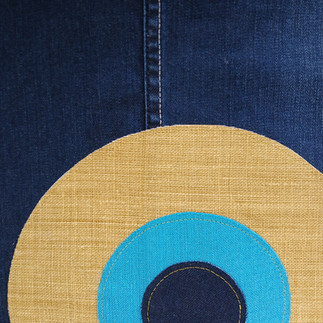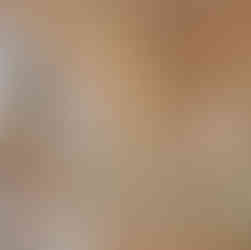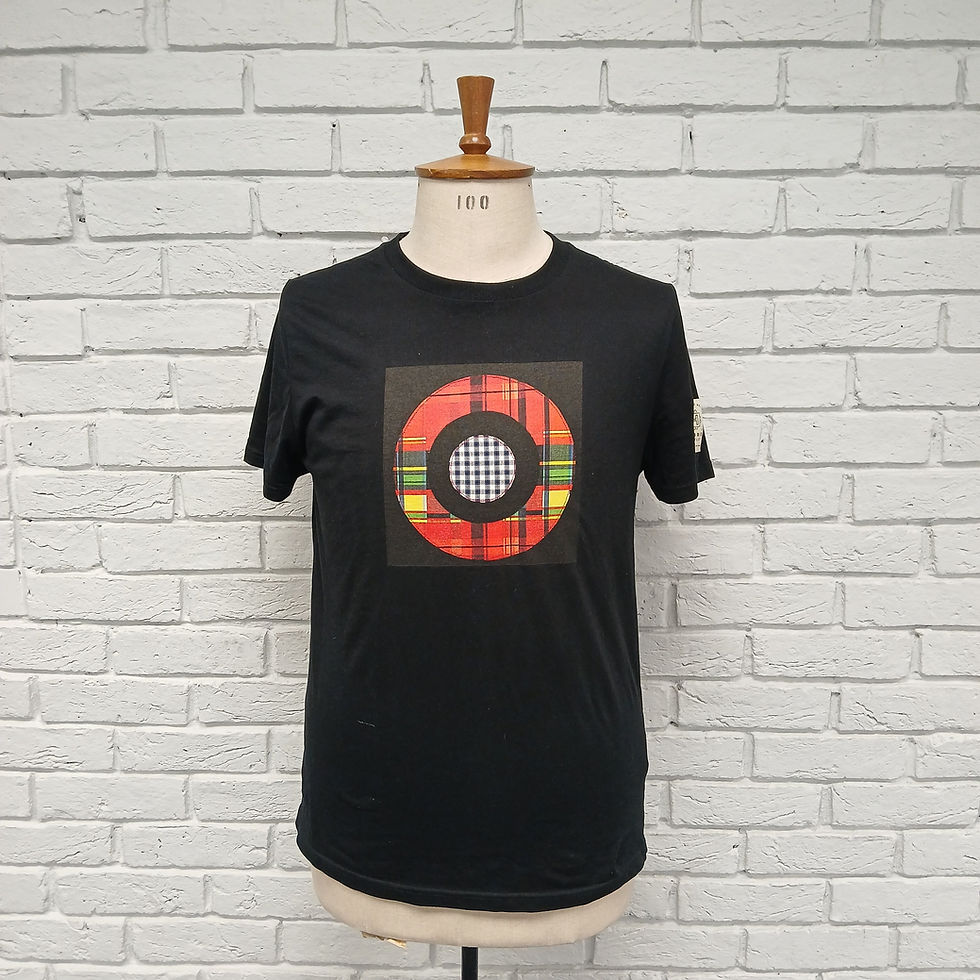
Round like a circle in a spiral. Like a wheel within a wheel. Never ending or beginning. On an ever spinning reel.
- reptilicus
- Oct 2
- 4 min read
Song by Michel Legrand ‧ 1955
I was thinking what could I write about in my next blog post. Quite often people say, "Phil, you really like circles, you use them a lot". Here is why, read and enjoy Dusty at the same time....
Hybrid Styles, Phil Bint
If one was to look at my creative practice, whether it is textiles or fashion, circles play an important part in my design methodology. Sometimes, I use circles as a conscious design choice, other times, I just use them. I find the circle a very pleasing shape. It has no hard edges, it is soft, it is easy on the eye. There is harmony, perfection, their presence in nature, gives them a almost sacred significance
A circle is a two-dimensional geometric shape formed by all the points in a plane that are the same distance.
Circles are found naturally in nature and also around us in manmade forms, particularly in architecture. Architecture is a beautiful platform for circles. We often see geometric, rectangular architectural forms around us, so when we see a building that is curved, and circles are integral to it's aesthetic, it gets noticed.

See bibliography at bottom of this post for image citations
Richard Wilson: Turning the Place Over
This was an art installation that Wilson created on/in a building, as part of the Liverpool Biennial, 2007. It is not quite a circle but I love what Wilson has created.
This is the description of the piece, that accompanies the video. The video is not HD, but, one can appreciate it's beauty.
22 Nov 2007
"The most daring piece of public art ever commissioned in the UK, Turning the Place Over is artist Richard Wilson's most radical intervention into architecture to date, turning a building in Liverpool's city centre literally inside out. One of Wilson's very rare temporary works, Turning the Place Over colonises Cross Keys House, Moorfields. It runs in daylight hours, triggered by a light sensor. Turning the Place Over consists of an 8 metres diameter ovoid cut from the façade of a building in Liverpool city centre and made to oscillate in three dimensions. The revolving façade rests on a specially designed giant rotator, usually used in the shipping and nuclear industries, and acts as a huge opening and closing 'window', offering recurrent glimpses of the interior during its constant cycle during daylight hours."
Symbolism and the Use of Circles in Religion
From the time of the earliest known civilisations – such as the Assyrians and ancient Egyptians, those in the Indus Valley and along the Yellow River in China, the Western civilisations of ancient Greece and Rome – the circle has been used directly or indirectly in visual art to convey the artist's message, to express certain ideas. However, differences in beliefs and culture have had a great impact on artists' perceptions. While some emphasised the circle's perimeter to demonstrate their democratic manifestation, others focused on its centre to symbolise the concept of cosmic unity. In mystical doctrines, the circle mainly symbolises the infinite and cyclical nature of existence, but in religious traditions it represents heavenly bodies and divine spirits.
The circle signifies many sacred and spiritual concepts, including unity, infinity, wholeness, the universe, divinity, balance, stability and perfection, among others. These have been represented through the use of symbols; a compass, a halo, the mandorla, the ouroboros (a cyclical symbol depicting a serpent or snake eating it's own tail), the Dharma wheel, a rainbow, mandalas, rose windows and so forth
The Use of Circles in my Work
The first time I consciously used a circle, was in a shirt I made for a private end of year show at Brighton Met College, where I work. For this shirt, I created an inset circle design. The next time, I used circles, was when I designed and made a tailored jacket out of some tweed. The circle was created using the same technique I had used for the shirt. It was to demonstrate BA Hons second year Fashion students, Northbrook College, how to construct a tailored jacket, and how to be more creative with seams. For this jacket I tried to engineer seams away from the traditional side seams and should seams. The seams cutting across the jacket front and back. Taking the eyes on a visual journey, into the jacket. A lot of time was spent matching the checked tweed fabric.

Tweed Jacket design and photo, Phil Bint
The following images show my use of circles in a dress shirt I deconstructed from two dress shirts, and reconstructed, combining them. There is a play on colour, the use of inset circles and the displacement of collars into unusual, non-traditional zones.
design and photo, Phil Bint
These ideas were then developed further into the Hybrid Styles shirt aesthetic. In my early Hybrid shirts my use of circles was singular, taking one circle and using applique to place it on it's own. I now tend use two to three circles together, which, in some cases, has developed into the "Mod" target or roundel motif, sometimes using the blue, white and red colour combination. The use of squares, rectangles and circles accentuate each others straight and curved edges.
The use of colour, and checks are also an integral part of the Hybrid Styles, design aesthetic.
Catwalk image, Malcolm Tam Fashion shoot, Phil Bint
As my range develops, I know I want to move forward bringing other additional shapes into play. But whatever I do, there will always be a circle, somewhere in my designs..
"Th'hast spoken right, 'tis true.
The wheel has come full circle; I am here."
King Lear, Act 5, scene 3, William Shakespeare
Images: Natural Forms
Rings in a tree: BBC Bitesize Natural Shapes Around the World
Iris: Human Iris, Medical News Today
Mushrooms: Marasmius oreades photographed in Dearborn, Michigan, USA
Images: Architecture
Brion Cemetary, San Vito D'Altivole, Italy, by Carlo Scapa, 1968
Penda Hongkun Art Auditorium, Beijing, 2016, by Precht, photo by Xia Zhi
Nakagin Capsule Tower by Kisho Kurokawa, Shimbashi, Tokyo, Japan
The National Assembly, Dhaka, Louis I.Kahn Photography by John Shreve Arbuckle
Catwalk Images, 1st and 3rd image
Malcolm Tam
E-mail: malcota_hotmail.com
Web: malcolmtam.com
Insta: malcolm.tam_
Image JPEG9366
2nd image, Phil Bint, 2025
Northbrook College BA (Hons) Fashion Design
BBC Science Focus Magazine
Circle


















































Comments